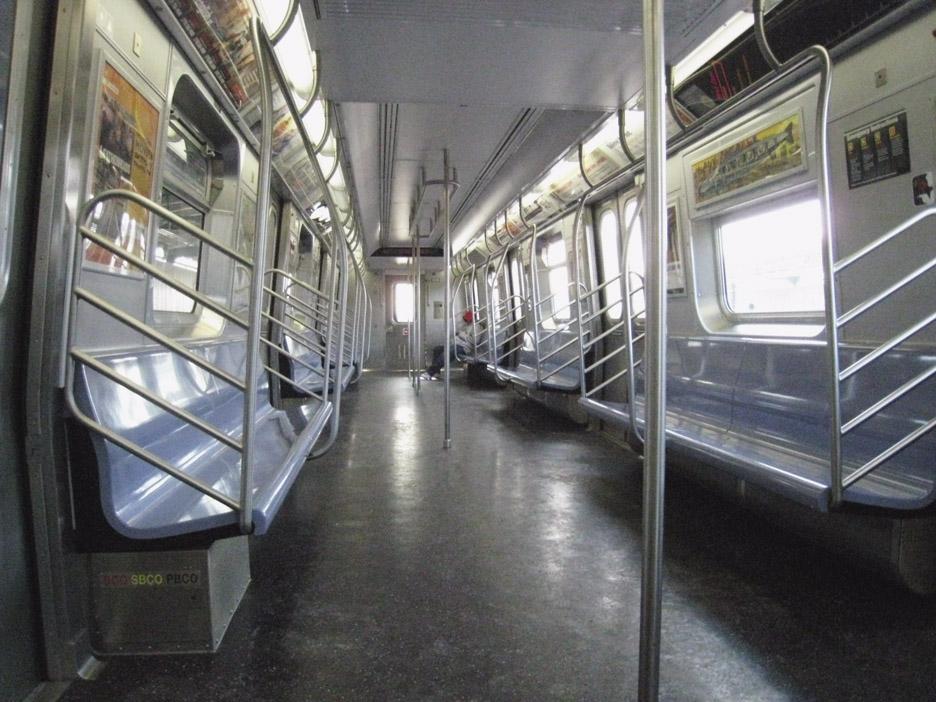Proposed Ban Makes Subway Photographers Shudder
June 20, 2011

Published: April 2, 2009
In 1938, Walker Evans walked onto a subway car with a concealed camera and shot a series of photos of unsuspecting subway patrons for a series that would later be exhibited at the Museum of Modern Art and remains to this day on display at the Metropolitan Museum of Art. Ironically, if Evans were to try and do this project today, he would likely be accosted by police—on account of a law that doesn’t actually exist.
In the wake of the Sept. 11 attacks, New York City has taken every precaution to ensure the safety of the general public. New Yorkers generally welcomed the heightened security measures which included a greater police presence in the subways and as of July 2005, a policy whereby all subway and bus riders would be subject to random bag checks. But when the MTA proposed a ban on photography taken in the subway in May of 2004, the public wasn’t so sure if the ban would protect them so much as restrict their freedom.
The proposed ban would have forbid using video cameras and taking photographs in subways and buses as a safety measure against terrorism. Protests ensued—including one in which nearly 100 photographers gathered in Grand Central Station and rode uptown snapping pictures all the while—and ultimately, the ban did not pass. Yet, since 2004, a number of New Yorkers have reported that they’ve been harassed by the police for taking photographs in the subway. Recently, the New York Times did an article on a college student arrested on claims of disorderly conduct and “impeding traffic” after reminding the police of his right to photograph in the subway. So why are the police enforcing a nonexistent law at the expense of the people?
According to section 1050.0 of the MTA rules of conduct, as long as photography, filming or video recording does not utilize “ancillary equipment such as lights, reflectors or tripods,” then it is allowed. In actuality, it is the police who are in violation of the law when apprehending New Yorkers for photographing, filming or recording in accordance with the law.
Many New Yorkers, specifically those in the Fordham College at Lincoln Center (FCLC) community, have expressed concern over police enforcement of a ban that was never officially passed.
“It is discouraging to learn about this incident as a photographic artist and citizen of this country,” said Vanessa Albury, adjunct professor of photography at FCLC. “I am especially disturbed that a citizen demonstrates a coherent understanding of the law and instead of this knowledge and effort to be an upstanding, law-abiding citizen working in his favor, it is held against him. Standing up for your rights is supposed to be an American value, not worthy of punishment.”
“It’s kind of crazy how your rights can be trampled by police. Subways are common facets of society to which we should have access,” said Kevin Longwell, FCLC ’10.
Although it is understood that some anti-terrorism measures must be taken, many question if this ban would be the most effective way to protect the population. From camera phones to digital cameras that can fit in the most inconspicuous of places, many believe that it is unrealistic to try to forbid subway photography.
“It is ludicrous, almost impossible, to think that you can prevent photographs from being taken in the subway,” said Joseph Lawton, associate professor of photography at FCLC. “Besides, most of the pictures taken in the subway are done by tourists.”
Some are more understanding about the intentions of the proposed ban but do not agree with the actions of police who attempt to enforce it, because the ban never went into legal effect.
“To my knowledge, there are many places, like the airport and bridges where there are restrictions on photography, but on the other hand, I do believe that it is the job of the police to enforce the law, not create it,” said Cat Roberts, FCLC ’09.
“I understand that there are some places that photography cannot be done, and it’s not surprising to me that the subway could be one of them,” said Mariel Bird, FCLC ’09, “However, being that this ban never made it past the boardroom, the actions of the police are completely unjust.”
Bird, who is a visual arts minor and has a specific interest in photography, is disturbed by the limitations that this ban would impose on artists like herself.
“It’s sad because it cuts off the creative spirit,” Bird said. “If you’re going to be artistic, you should be able to express yourself to the best of your ability given your actions don’t pose a danger to others.”
The subway remains an intriguing place to capture photography, and as Walker Evans showed us, can inspire artwork of a natural and candid nature. Maybe even more pressing is that despite the difference in opinion when it comes to the validity of the proposed ban—most New Yorkers, especially those in the FCLC community, appear to harbor a collective unease when it comes to the practices of police enforcing a law that was never passed.









